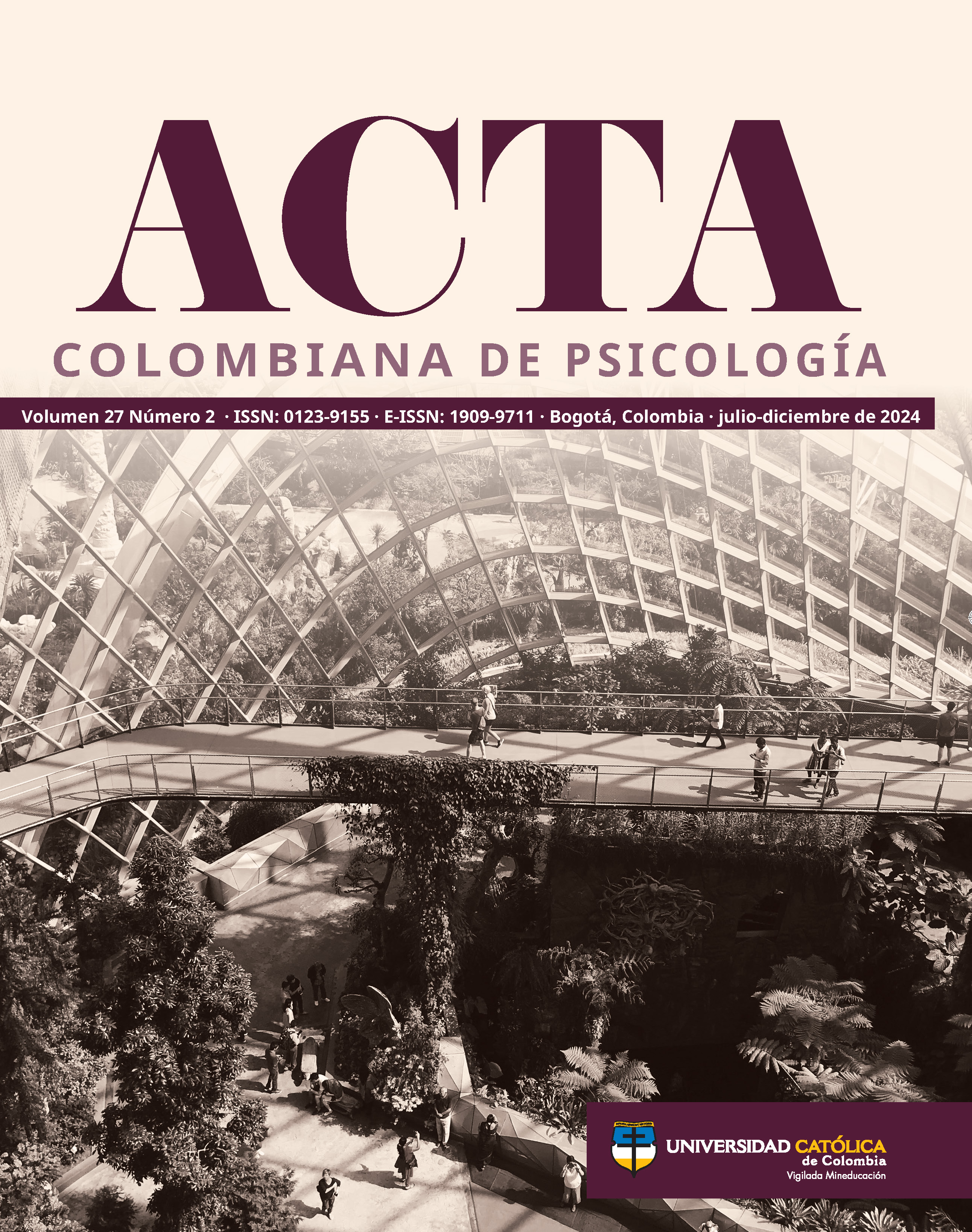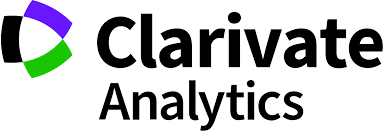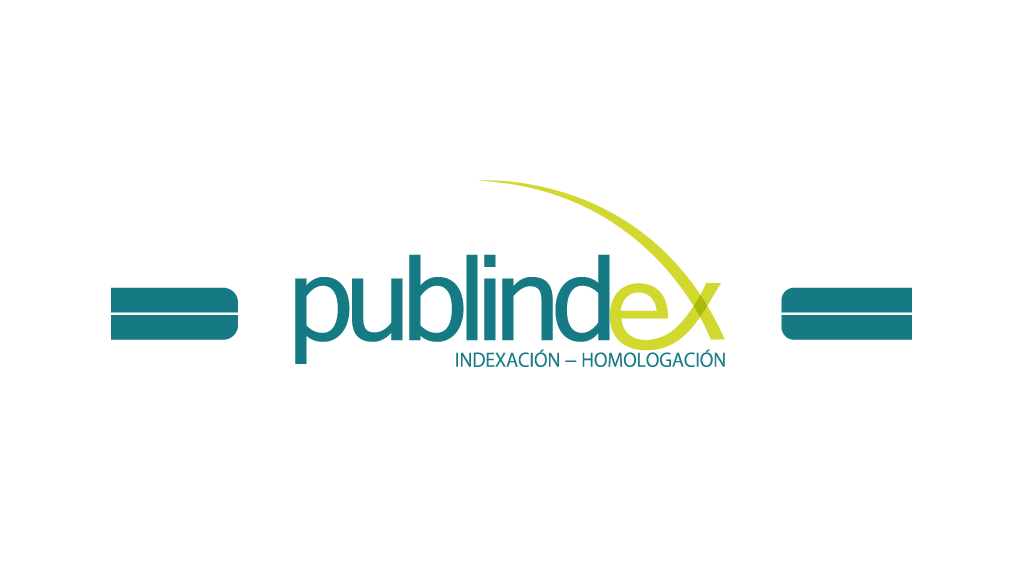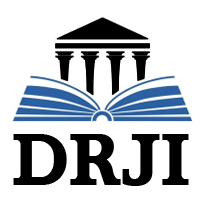
This work is licensed under a Creative Commons Attribution-NonCommercial-ShareAlike 4.0 International License.
Authors who publish in this journal agree to the following terms:
Acta Colombiana de Psicología complies with international intellectual property and copyright laws, and particularly with Article No. 58 of the Political Constitution of Colombia, Law No. 23 of 1982, and the Agreement No. 172 of September 30, 2010 (Universidad Católica de Colombia Intellectual Property Regulation).
Authors retain their copyright and grant to the Acta Colombiana de Psicología the right of first publication, with the work registered under Creative Commons attribution license, which allows third parties to use the published material, provided they credit the authorship of the work and the first publication in this Journal.
Abstract
The COVID-19 pandemic brought about various changes in lifestyle dynamics and mental health for the general population, particularly among adolescents, whose levels of well-being were altered, placing them in vulnerable conditions. Based on this, the objective was to compare living conditions and the perception of subjective well-being in two groups of high school students: drug users (those who have used a psychoactive substance at least once in their lifetime) and non-users (abstainers). Using a non-experimental, cross-sectional, ex post facto design, a questionnaire was administered to 394 students from the state of Veracruz, Mexico (58.1% female, 39.1% male, 2.8% other gender [non-binary]), aged between 14 and 17 years (M = 15.2, SD = 0.59). The instrument included the Subjective Well-Being and Living Conditions Scale, as well as a block of items exploring the use of psychoactive substances (e.g., alcohol, tobacco, marijuana, cocaine, methamphetamines). The results showed that 10.7% acknowledged having used a drug, and this group recorded significantly lower average scores in the dimensions of subjective well-being: lower happiness and life satisfaction (p < .01), lower educational, economic, and emotional well-being (p < .05), lower satisfaction with life domains (p < .01), and lower satisfaction with public goods and services (p < .05). These findings underscore the need to develop intervention strategies for adolescents, as they may be in more vulnerable conditions.

References
Andrade, P., & Betancourt, O. D. (2008). Factores individuales, familiares y sociales y conductas de riesgo en adolescentes. En P. Andrade, M. J. Cañas & O. D. Betancourt (Eds.), Investigaciones psicosociales en adolescentes (pp. 81-227). UNICACH.
Arbuckle, J. L. (2016). User’s guide. IBM SPSS AMOS for structural equation modeling, Version 24.0. IBM Corp.
Asociación Médica Mundial [AMM]. (2013). Declaración de Helsinki de la AMM - Principios éticos para las investigaciones médicas en seres humanos. AMM. https://www.wma.net/es/policies-post/declaracion-de-helsinki-de-la-amm-principios-eticos-para-las-investigaciones-medicas-en-seres-humanos/
Beltrán-Guerra, L. F., & Arellanez-Hernández, J. L. (2020). Calidad Psicométrica de la Escala “Bienestar Subjetivo y Condiciones De Vida” en Adultos Mexicanos. Psicologia Conductual, 28(3), 477-497. https://www.behavioralpsycho.com/wp-content/uploads/2020/12/06.
Beltran_28-3.pdf Beltrán-Guerra, L. F., Arellanez-Hernández, J. L., & Romero-Pedraza, E. (2022). Bienestar subjetivo, violencia y consumo de sustancias psicoactivas en jóvenes veracruzanos. Una contribución diagnóstica en el marco de la cultura de paz. En F. J. Gorjón-Gómez (Coord), La paz a través de la educación. Perspectivas para el desarrollo de una cultura de paz en México desde las Instituciones de Educación Superior (pp. 247-260). ANUIES Dirección de Producción Editorial.
Bentler, P. M., & Bonnet, D. G. (1980). Significance tests and goodness-of-fit in the analysis of covariance structures. Psychological Bulletin, 88(3), 588-606. https://doi.org/10.1037/0033-2909.88.3.588 Browne, M. W., & Cudeck, R. (1992). Alternative Ways of Assessing Model Fit. Sociological Methods & Research, 21(2), 230-258. https://doi.org/10.1177/0049124192021002005
Buitrago, F., Ciurana, R., Fernández, M. D. C., & Tizón, J. L. (2021). Repercusiones de la pandemia de la COVID-19 en la salud mental de la población general. Reflexiones y propuestas. Atención Primaria, 53(7), 102143. https://doi.org/10.1016/j.aprim.2021.102143
Centros de Integración juvenil [CIJ]. (2024). Reporte del Sistema de Información Epidemiológica del Consumo de Drogas. Consumo de drogas en solicitantes de tratamiento en Centros de Integración Juvenil. Consumidores de Drogas Ilícitas. Segundo semestre del 2023. CIJ. http://www.cij.gob.mx/programas/Investigacion/Epidemiologica.asp
Cheung, F., & Lucas, R. E. (2014). Assessing the validity of single-item life satisfaction measures: results from three large samples. Quality of Life Research, 23(10), 2809-2818. https://doi.org/10.1007/s11136-014-0726-4
Chico, L. E. (2006). Personality and subjective well-being. The Spanish Journal of Psychology, 9(1), 38-44. https:// doi.org/10.1017/S1138741600005953
Córdova-Alcaráz A. J., Rodríguez-Kuri, S. E., & Díaz-Negrete, D. B. (2010). Bienestar subjetivo en jóvenes mexicanos usuarios y no usuarios de drogas. Revista Intercontinental de Psicología y Educación, 12(2), 147-162. https://www.redalyc.org/articulo.oa?id=80218376008
Díaz-Loving, R., González, N. I., Torres, M. A., & Villanueva, M. (2022). Determinantes del Bienestar Subjetivo en Adultos Mexicanos durante el Primer periodo de Confinamiento por Covid-19. Revista Iberoamericana de Psicología, 15(1), 91-102. https://doi.org/10.33881/2027-1786.rip.15109
Díaz, D. B. (2018). Estudio Básico de Comunidad Objetivo. Metodología. Centros de Integración Juvenil. http://www. cij.gob.mx/ebco2018-2024/metodologia.html
Diego, M., Field, T., & Sanders, C. (2003). Academic performance, popularity, and depression predict adolescent substance use. Journal of Adolescence, 38(149), 35-42. https://psycnet.apa.org/record/2003-06113-004
Diener, E., Lucas, R. E., & Oishi, S. (2018). Advances and open questions in the science of subjective well-being. Collabra: Psychology, 4(1), 15. https://doi.org/10.1525/collabra.115
Dirección de Adolescencias y Juventudes del Ministerio de Salud de la Nación (2020). Lineamientos para la atención de adolescentes y jóvenes durante el curso de la pandemia de COVID-19. Ministerio de Salud, Argentina. https://bancos.salud.gob.ar/sites/default/files/2020-12/Lineamientos%20adolescentes%20 en%20pandemia%20-%20Equipos%20de%20Salud.pdf
Eidman, L., Bender, V., Arbizu, J., Lamboglia, A. T., & Correa Del Valle, L. (2020). Bienestar emocional, psicológico y social en adultos argentinos en contexto de pandemia por COVID-19. Psychologia, 14(2), 69-80. https://doi.org/10.21500/19002386.4851
González-Rey, F. (1995). Comunicación, personalidad y desarrollo. Editorial Pueblo y Educación. https://fernandogonzalezrey.com/images/PDFs/restaurados/Comunicacin_personalidad_y_desarrollo_1995.pdf
González, B. R, Montoya, C. I., Casullo, M., & Bernabéu, V. J. (2002). Relación entre estilos y estrategias de afrontamiento y bienestar psicológico en adolescentes. Psicothema, 14(2), 363-268. https://reunido.uniovi.es/ index.php/PST/article/view/8028
Grupo de Salud Mental del PAPPS. (2020). Salud Mental en Epidemias: Una perspectiva desde la Atención Primaria a la Salud Española. SemFYC y PAPPS. https://drive.google.com/file/d/1C54bAR-LDhIS5ox5NfkKDjJpg0c-mChA/view
Gutiérrez, M., & Romero, I. (2014). Resiliencia, bienestar subjetivo y actitudes de los adolescentes hacia el consumo de drogas. Anales de Psicología/Annals of Psychology, 30(2), 608-619. https://doi.org/10.6018/analesps.30.2.148131
Hernández, J. (2020). Impacto de la COVID-19 sobre la salud mental de las personas. Medicentro Electrónica, 24(3), 578-594. https://medicentro.sld.cu/index.php/medicentro/article/view/3203/2588
Ho, M. Y., Cheung, F. M., & Cheung, S. F. (2010). The role of meaning in life and optimism in promoting well-being. Personality and Individual Differences, 48(5), 658-663. https://doi.org/10.1016/j.paid.2010.01.008
Huarcaya-Victoria, J. (2020). Consideraciones sobre la salud mental en la pandemia de COVID-19. Revista Peruana de Medicina Experimental y Salud Pública, 37(2), 327-334. https://doi.org/10.17843/rpmesp.2020.372.5419
IBM Corp. (2016). IBM SPSS Statistics for Windows (versión 24.0) [programa de ordenador]. IBM.
Instituto Nacional de Psiquiatría Ramón de la Fuente Muñiz [INPRFM], Comisión Nacional Contra las Adicciones & Secretaría de Salud. (2014). Encuesta Nacional de Consumo de Drogas en Estudiantes 2014: Reporte de Alcohol. Gobierno de México. https://www.gob.mx/salud%7Cconadic/documentos/encuesta-nacional-de-consumo-de-drogas-en-estudiantes-2014-encode
Instituto Nacional de Psiquiatría Ramón de la Fuente Muñiz [INPRFM], Instituto Nacional de Salud Pública, Comisión Nacional Contra las Adicciones & Secretaría de Salud. (2017). Encuesta Nacional de Consumo de Drogas, Alcohol y Tabaco ENCODAT, 2016-2017. Gobierno de México. https://www.gob.mx/salud%7Cconadic/acciones-y-programas/encuesta-nacional-de-consumo-de-drogas-alcohol-y-tabaco-encodat-2016-2017-136758
Instituto Nacional de Salud Pública [INSP]. (2016). Consentimiento informado. Gobierno de México. http://www. insp.mx/insp-cei/consentimiento-informado.html
Jiménez-Padilla, B. I., Flores-Garza, P. L., Alonso, M. M., & López-García, K. S. (2022). El consumo de alcohol de los padres y su relación con el consumo de alcohol en adolescentes durante la pandemia de COVID-19. Revista Internacional de Investigación en Adicciones, 8(2), 25-31. https://doi.org/10.28931/riiad.2022.2.04
Kerlinger, F. N., & Lee, H. B. (2002). Investigación del comportamiento (4.ª ed.). Mc Graw Hill.
Kosttelecky, K. L. (2005). Parental attachment, academic achievement, life events and their relationship to alcohol and drug use during adolescence. Journal of Adolescence, 28(5), 665-669. https://doi.org/10.1016/j. adolescence.2004.12.006
Maganto, C. M., Peris, M. P., & Sánchez, R. S. (2019). El bienestar psicológico en la adolescencia: variables psicológicas asociadas y predictoras. European Journal of Education and Psychology, 12(2), 139-151. https://doi. org/10.30552/ejep.v12i2.279
Martínez-González, J. M., & Robles-Lozano, L. (2001). Variables de protección ante el consumo de alcohol y tabaco en adolescentes. Psicothema, 13(2), 222-228. https://www.psicothema.com/pdf/439.pdf
Medina, S. J. (2022). El género no binario como manera deconstruida de interpretar el mundo. Revista Disertaciones, 11(2), 67-85. https://doi.org/10.33975/disuq.vol11n2.861
Monteiro, M. (2020). Alcohol y COVID-19. Organización Panamericana de la Salud, Organización Mundial de la Salud. https://www.paho.org/es/documentos/alcohol-covid-19-maristela-monteiro
Organización Mundial de la Salud [OMS]. (2020). Los servicios de salud mental se están viendo perturbados por la COVID-19 en la mayoría de los países, según un estudio de la OMS. OMS. https://www.who.int/es/news/item/05- 10-2020-covid-19-disrupting-mental-health-services-in-most-countries-who-survey
Organización Panamericana de la Salud [OPS]. (2020). Informe COVID 19 CEPAL–OPS. Salud y economía: una convergencia necesaria para enfrentar el COVID-19 y retomar la senda hacia el desarrollo sostenible en América Latina y el Caribe. OPS. https://www.paho.org/es/publicaciones/salud-economia-convergencia-necesaria-para-covid-19-retomar-senda-hacia-desarrollo
Palacio-Ortiz, J. D., Londoño-Herrera, J. P., Nanclares-Márquez, A., Robledo-Rengifo, P., & Quintero-Cadavid, C. P. (2020). Trastornos psiquiátricos en los niños y adolescentes en tiempo de la pandemia por COVID-19. Revista Colombiana de Psiquiatría, 49(4), 279-288. https://doi.org/10.1016/j.rcp.2020.05.006
Pérez, M. J., Díaz, A., & Calixto, M. G. (2018). Experiencia vivida de los adolescentes consumidores de drogas: un abordaje fenomenológico. Revista da Escola de Enfermagem da USP, 52, e03349. http://dx.doi.org/10.1590/ S1980-220X2017042803349
Quimbayo, L. R., Fandiño, V., & Valencia, M. L. (2012). Condiciones de vida desde el enfoque de los determinantes sociales en salud en un grupo organizado de madres adolescentes. Revista CUIDARTE, 3(1), 308-319. https://doi.org/10.15649/cuidarte.v3i1.26
Restrepo, H., & Málaga, H. (2001). Promoción de la salud: Como construir vida saludable. Editorial Médica Panamericana. https://iris.paho.org/bitstream/handle/10665.2/3296/Promocion%20de%20la%20salud%20 como%20construir%20vida%20saludable.pdf?sequence=1&isAllowed=y
Rojas, H. M. (2005). El bienestar subjetivo en México y su relación con indicadores objetivos. Consideraciones para la política pública. En E. Garduño (Ed.), Calidad de vida y bienestar subjetivo en México (pp. 83-112). Editorial Plaza y Valdés.
Secretaría de Salud. (1983). Reglamento de la Ley General de Salud en Materia de Investigación para la Salud. Diario Oficial de la Federación. http://www.salud.gob.mx/unidades/cdi/nom/compi/rlgsmis.html
Secretaría de Salud. (2013). NORMA Oficial Mexicana NOM-012-SSA3-2012, que establece los criterios para la ejecución de proyectos de investigación para la salud en seres humanos. Diario Oficial de la Federación. https://dof.gob.mx/nota_detalle.php?codigo=5284148&fecha=04/01/2013
Sikorski, J. (1996). Academic underachivement and school refusal. En R. DiClemente, W. Hansen y L. Ponton (Eds.), Handbook of adolescent health risk behavior (pp. 393-411). Springer. https://doi.org/10.1007/978-1- 4899-0203-0_15
Sun, R. C., & Shek, D. T. (2012). Positive youth development, life satisfaction and problem behaviour among Chinese adolescents in Hong Kong: A replication. Social Indicators Research, 105(3), 541-559. https://doi. org/10.1007/s11205-011-9786-9
The Lancet Psychiatry. (2020). Send in the therapist? The Lancet Psychiatry, 7(4), 291. https://doi.org/10.1016/ S2215-0366(20)30102-4 Tizón, J. L. (2020). Salud emocional en tiempos de pandemia. Reflexiones urgentes. Herder e-book. https://0201. nccdn.net/1_2/000/000/0c4/0ae/La-salud-emocional-en-tiempos-de-pandemia---Jorge-Tiz--n.pdf
Urzúa, M. A, & Caqueo-Urízar, A. (2012). Calidad de vida: Una revisión teórica del concepto. Terapia Psicológica, 30(1), 61-71. https://doi.org/10.4067/S0718-48082012000100006
Valois, R. E., Zullig, K. J., Huebner, E. S., & Drane, J. W. (2001). Relationship between life satisfaction and violent behaviours among adolescents. American Journal of Health Behavior, 25(4), 353-366. https://doi.org/10.5993/ AJHB.25.4.1
Velasco, P., Aragón, S., Díaz-Loving, R., García, M, Domínguez, A. (2021). Relaciones interpersonales como predictores del bienestar subjetivo. En C. Armenta, A. Domínguez y C. Cruz (Eds.), Psicología Social Mexicana (pp. 97-112). Universidad Iberoamericana. https://ibero.mx/sites/all/themes/ibero/descargables/publicaciones/psicologia_social_mexicana.pdf
Wood, A. M., Froh, J. J., & Geraghty, A.W. (2010). Gratitude and well-being: A review and theoretical integration. Clinical Psychology Review, 30(7), 890-905. https://doi.org/10.1016/j.cpr.2010.03.005
World Health Organization [WHO]. (2020). Mental health and psychosocial considerations during the COVID-19 outbreak, 18 March 2020. WHO. https://apps.who.int/iris/handle/10665/331490?locale-attribute=ar&locale-
































